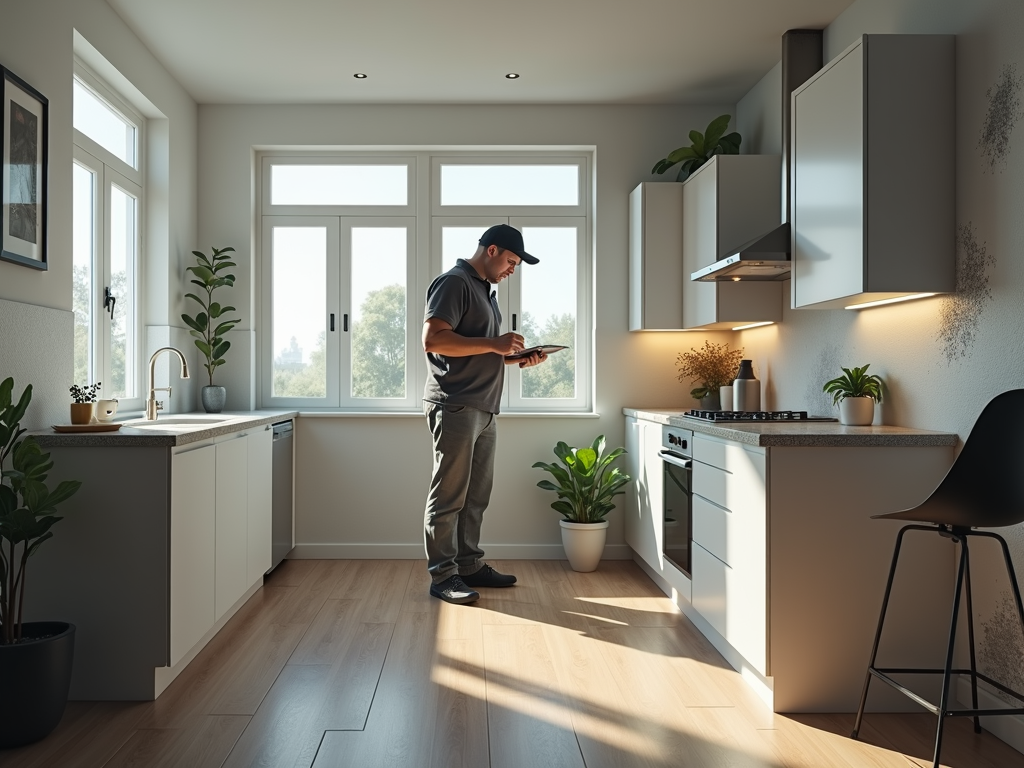Have you ever thought about what’s really happening during a mold inspection? It’s not a quick glance at your walls or a simple sniff of the air. Professional inspectors are trained to dig deep and identify issues that you might not notice yourself.
If you’re preparing for one, or just curious, here’s what’s actually happening behind the scenes when they walk through your door.
Checking for Visible Mold
First up, visible mold. Inspectors are trained to look beyond the obvious. They know mold can grow in places that aren’t immediately noticeable. It’s not just large black patches either. Mold can appear as small specks, faint discoloration, or fuzzy patches that blend right into surfaces.
During the mold inspection, they’ll carefully examine areas like walls, ceilings, floors, and tucked-away corners, especially in bathrooms, basements, and around windows. Cabinets, closets, and even HVAC vents receive a close examination because mold thrives in dark, damp spaces.
But it’s not just about finding the mold. Inspectors are also thinking about why it’s there in the first place.
Hunting for Moisture Problems
Mold doesn’t just show up for no reason. It needs moisture, so the next step is to identify any water issues. Inspectors will pay close attention to signs like stains on ceilings, bubbling paint, sagging drywall, or warped flooring.
Even if everything appears fine, they often use moisture meters to check the interior of walls and floors. Sometimes, water damage hides where you least expect it. It’s this hidden dampness that can lead to significant mold problems down the line.
Following the Scent
Sometimes the strongest clues aren’t what you see; they’re what you smell. A musty, earthy odor is one of the biggest giveaways that mold is growing somewhere out of sight. Inspectors pay close attention to certain areas that tend to trap moisture and poor air flow, like:
- Basements – naturally more humid and often neglected
- Bathrooms – steam-heavy and perfect for mold if not ventilated
- Kitchens – around sinks, dishwashers, and hidden plumbing leaks
- Laundry rooms – washing machines and utility sinks can lead to moisture buildup
- Attics – insulation and poor ventilation create ideal conditions
That unmistakable musty smell often points them toward problems that would otherwise stay hidden.
Checking Indoor Air Quality
Not all mold growth is visible. Spores can be floating in the air without any outward signs. Some inspectors will take air samples to measure mold spore levels inside the home. If the results come back high, it’s a sign that mold might be growing somewhere behind walls, under floors, or in ceilings.
Surface samples can also be taken if there’s a suspicious patch. These are often sent to labs to identify the exact types of mold present, which helps determine the severity of the situation.
Looking at Ventilation and Humidity
Another thing inspectors care about is how well your house handles moisture in the first place. Good ventilation is critical. If your home traps humidity, it creates a perfect breeding ground for mold. They’ll check if exhaust fans are properly installed in bathrooms and kitchens. Attics and crawl spaces are also important, because poor airflow in those areas often leads to big mold problems.
Indoor humidity levels matter too. Ideally, your home’s humidity level should be between 30% and 50%. Anything above 60% makes mold growth much more likely. Inspectors sometimes recommend using dehumidifiers or improving ventilation to keep things under control.
Asking About Past Water Damage
Even if your home looks dry now, past issues still matter. Mold can start growing after a flood or leak that occurred years ago if the repairs were not handled correctly.
Inspectors often ask if you’ve had:
- Water leaks
- Flooding
- Roof or plumbing problems
- Basement seepage
If there’s any history of water issues, they’ll pay extra attention to those areas, even if they seem fine today. Mold can remain hidden behind new drywall, under flooring, or within insulation for an extended period.
Materials and Construction Details
Certain building materials are naturally more vulnerable to mold. Inspectors know to check wood framing, drywall, carpet, and insulation carefully, especially in areas that are more prone to moisture.
They also pay attention to how the home is built. For example, homes with basements or crawl spaces tend to have more mold risk simply because those areas hold moisture. A poorly ventilated attic can be another trouble spot.
Knowing the materials and construction style helps inspectors figure out where mold is more likely to hide and what parts of the home need closer inspection.
High Priority Areas During Inspections
While a full inspection covers the entire property, some areas usually get checked first because they’re more likely to have mold problems. Basements are a big one, since they tend to be humid and harder to keep dry. Bathrooms, especially around showers, tubs, and under sinks, are another. Kitchens get a close look, mainly around plumbing fixtures. Laundry rooms and attics round out the list because of how often they trap heat and moisture.
Staying Ahead of Mold Problems
Knowing what mold inspectors actually look for makes it easier to stay ahead of potential problems in your home. Monitoring moisture, promptly addressing leaks, enhancing ventilation, and regulating humidity levels are all prudent steps.
Most mold issues can be prevented with a little extra attention. But if there’s ever a question, a professional inspection gives you a full picture of what’s happening, even behind the walls where you can’t see.
Catching mold early keeps your home safer, healthier, and saves you from much bigger problems down the road.




